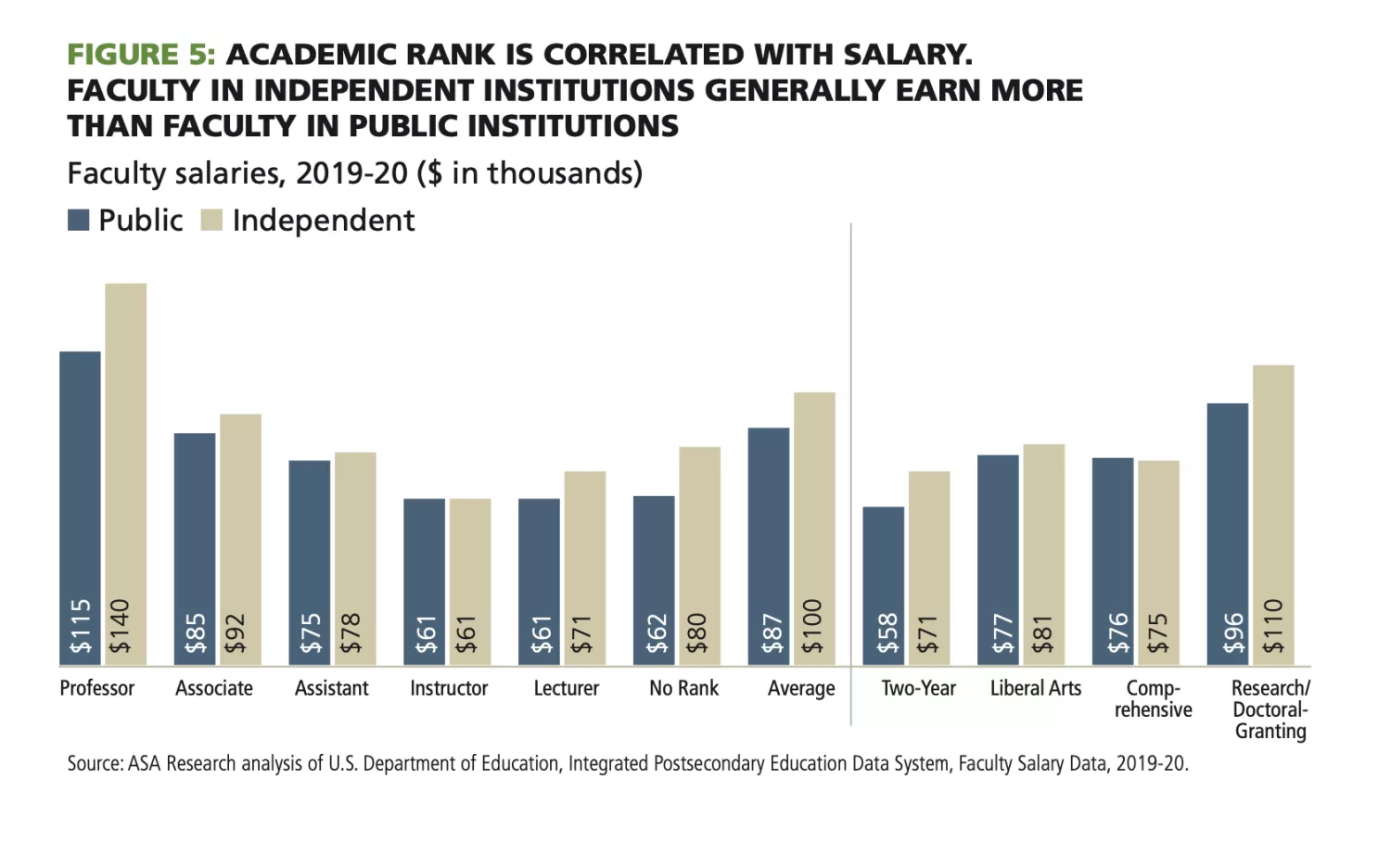Key Takeaways
- Overall, full-time faculty pay has improved over the past decade, since the Great Recession. The average full-time professor earned about $90,000 last year.
- Faculty at HBCU pay a penalty for their dedication to historically Black colleges and universities (HBCUs). They get paid about $18,000 less, on average, than faculty at non-HBCUs.
- Women also get paid less, on average. This is largely because the best-paid professors are working at large, research institutions where men outnumber women.
The highest-paid faculty member in the U.S. is likely a man, working in a law school or maybe a business school, at a doctoral-granting research institution. He’s very unlikely to be at a historically Black college or university (HBCUs). Definitely not teaching English or library science.
He’s also very likely to be a union member.
These rough conclusions are based on the latest NEA Higher Education Special Salary report, which dives deeply into the salaries paid to full-time faculty members in the United States. Published this month, it documents the HBCU pay penalty; the “union difference” among faculty; the persistent gender gap; and more.
In early 2020, the salaries of full-time faculty were better than they had been in a decade, the report found. In fact, faculty purchasing power — that is faculty’s annual average salary, corrected for inflation — was about $4,000 higher than 2010-2011.
On average, a full-time faculty member earned $90,749, before the COVID-19 pandemic struck, or 2 percent more than in 2019. However, average pay varies quite a lot within higher education, depending on the type of institution and the “rank” of a faculty member. Across the board, tenured professors at large, doctoral-granting research institutions are paid most.
Of course, since this data was collected, the pandemic has turned higher education on its head. Thousands of higher-education staff and adjunct faculty have been laid off. As student enrollment at the nation’s two-year colleges falls, more cuts may be ahead. Then again, the Biden administration just made the largest-ever, one-time investment in public education, including $40 billion to the nation’s colleges. It’s unclear what the future holds.

This Year’s Special Salary Report
For decades, NEA has been tracking salary trends among full-time faculty members across the U.S. Its annual report cuts and compares salaries in countless ways — by states, by academic fields, by gender, by rank, by institution type — and it includes average salaries for every public institution in the U.S.
This year’s report echoes many previous findings, specifically:
- There is a persistent penalty paid by faculty at historically Black colleges and universities (HBCUs). On average, HBCU faculty earn $18,000 less than those teaching in non-HBCU institutions, with HBCU faculty earning about $69,180, on average, compared to $87,385 for faculty in non-HBCUs.
- Women faculty are still paid less, on average. This is largely because the large majority of the best-paid, full professors at research universities are men.
- Graduate assistant labor is cheap. The average stipend was just $18,000 last year. Is it any surprise that this is a growing segment among academic unions?
- The union difference is real. In other words, when faculty can bargain for better pay and working conditions, they win them. Faculty with collective bargaining agreements earn $93,000, on average, compared to $79,000 among faculty who not only don’t have their own contracts but work in states where no faculty do.


